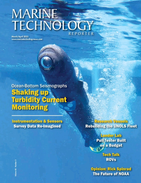Marine Technology Reporter Blogs - development
Subsea Connection Systems - FMC's UCON System

Subsea oil fields are dependent on a large amount of connections between various kinds of subsea equipment in order to function. They allow umbilicals, flowlines, risers and rigid jumpers to connect to manifolds, x-mas trees, BOPs, pipelines and riser bases. These connections need to be absolutely safe and reliable as connection problems can cause a series of problems in operating subsea equipment which may affect exploration and production only a little or cause these to partially or completely stop. On top of that subsea connection failures may also cause oil spills or gas leakage in the environment in small or large amounts, driving operators and subsea service and equipment providers to invest heavily in research regarding ideal connection manufacture…
Libra Pre-salt Development
As the time for the first pre-salt bidding round approaches, solid data begins to appear related to production forecasts and assets needed for the field’s development. Brazil’s National Petroleum Agency (ANP) has confirmed that the first pre-salt bidding round will take place in October 2013 in Rio de Janeiro and the rules concerning it have already drawn criticism from potential operators. ANP maintains that these rules will not be changed and has come forth with information concerning the field’s development. According to thr ANP, Libra is expected to produce first oil in 2018, that is, 5 years after the winning consortium signs the E&P contract for Libra. This contract will be signed by November 2013.
VetcoGray´s Metal-to-Metal Sealing Technology

The increase in exploratory O&G programs around the world and specifically the deepwater exploration programs being undertaken at the GOM, in West Africa and Brazil has caused major improvements and new technologies and materials to be employed in subsea equipment, such as BOPs, wellhead systems, risers, manifolds, flowlines, drilling fluids among others. GE´s VetcoGray has developed an interesting seal technology for its subsea wellheads. Named MS seal, it is based on Metal-to-metal sealing technology. All VetcoGray subsea wellheads use metal-to-metal sealing technology, which is superior to elastomer options because it prevents inevitable heat and corrosive fluids from damaging seal integrity. Both the wellhead and hanger have a sealing area of parallel wickers.
OGX – Intensifying Discovery Appraisals and Planning on ordering 3 more FPSOs

Paulo Mendonça, CEO of OGX stated that the first quarter of 2011 was very important for the Brazilian operator. OGX has been intensifying the campaign to appraise its discoveries in the Campos basin, where 16 wells have been spud since the beginning of the year, of which 10 are appraisal wells for the accumulations Waikiki, Pipeline and Illimani (Campos Basin) and Fazenda São José (Parnaíba Basin), with the intent of converting 3C contingent resources into 2C and 1C, and thereafter into reserves. -Delivering the vital and time sensitive declaration of commerciality to ANP (National O&G regulator), related to the discoveries in Campos, Santos and Parnaíba Basins.
Hydroid´s Remus 6000

The Remus 6000 AUV was designed and developed by a partnership between the Naval Oceanographic Office, the Office of Naval Research and the Woods Hole Oceanographic Institute (WHOI). The Hydroid Inc, is young company, which was founded in 2001 by the inventors of REMUS to commercialize their product and to allow this ultra-deepwater AUV technology to reach a wider market and to guarantee funding for continuous product development. The REMUS AUV is the product of over 15 years of leading edge research and development. The REMUS 6000 is the deepwater version of the acclaimed Remus 100, lightweight, shallow water AUV and the Remus 600 deep water AUV.
Deepwater Oil Spill Containment System for Brazil

Where is the Petrobras Deepwater Containment System? Brazil today arguably has the largest deepwater drilling program in the world and most probably the biggest all around drilling effort in the world to boot. In 2011 alone 162 new wells will be drilled in Brazil, an all time high and a 30% increase compared to last year. Of these, 53 wells will be drilled offshore. It´s safe to assume that over 20% of these will be in deepwater pre-salt or deepwater post-salt plays along the Santos, Campos and Espirito Santo Basins. When Petrobras first announced this significant increase in their drilling program scope, a lot was said about expectations for more large pre-salt finds, increase in production, new drilling technologies, logistics problems and solutions and ultimately, profit.
Society for Underwater Technology and UK BRAZIL Centre of Ocean Engineering

The SUT Technical Conference 2010 will be held in Rio de Janeiro and promises to be the main subsea event of the year in Brazil.The Society for Underwater Technology (SUT) is a multi-disciplinary learned society that brings together organisations and individuals with a common interest in underwater technology, ocean science and offshore engineering. SUT was founded in 1966 and has members from more than 40 countries, including engineers, scientists, other professionals and students working in these areas. Cross-fertilisation and dissemination of ideas, experience and information between workers in academic research, applied research and technology, industry and government. Development of techniques and tools to explore, study and exploit the oceans.
 February 2025
February 2025



